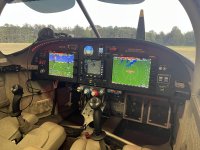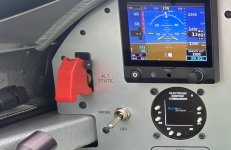Consider
Personally I've given this alt static situation thought in the past few weeks. For me, my static line runs right under the side canopy rail deck on my side of the plane. So if truly necessary, I can grab the line and cut it with a pocket knife to get cabin static pressure. Running a new tube afterwards is cheap.

Consider two scenarios:
1. Flying into similar conditions, you experience airspeed/altimeter issues. Those instrument are going to be giving you information; WRONG information. You have been taught to believe your instruments. So now your brain is presented a conflict...what to do. Meanwhile, you are attempting to fly the aircraft in IMC. You decide it is a P/S problem. So you reach into your pocket, find your handy swiss army knife that has 15 different gadgets on it, find the blade and open it with one hand, locate the tube running along the canopy, and, with one hand, cut the nylon tube. All while attempting to fly a sensitve aircraft in IMC.
2. Flying into similar conditions, you experience airspeed/altimeter issues. Those instrument are going to be giving you information; WRONG information. You have been taught to believe your instruments. So now your brain is presented a conflict...what to do. Meanwhile, you are attempting to fly the aircraft in IMC. You decide it is a P/S problem. So you reach out to the red guarded switch , and with one finger, switch to ALT air. All while attempting to fly a sensitve aircraft in IMC.
The examples are not to judge but to illustrate what you might potentially be dealing with.
In another section of my life, it was demonstrated, in no uncertain terms, what happens when you have an adrenalin dump...which would likely be the case in these scenarios. Three things will happen with that adrenalin dump:
1. You WILL get tunnel vision.
2. You WILL lose your hearing.
3. You WILL lose you fine motor control.
I know which scenario would have better odds of a successful outcome. At work, we practice unreliable instruments in IMC (in the sim). It is an eye opening experience.
Know what a good pitch/power setting is in your aircraft; if you suspect unreliable instruments, fly that pitch/power.







